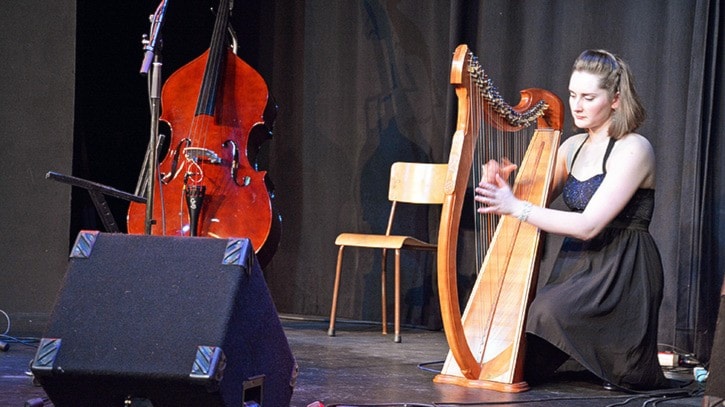By Hunter Ramey
Special to The Observer
One of Lizzy Hoyt’s favorite features from her home province of Alberta is its clear blue skies.
These skies, open and free, acted as a metaphor to Hoyt’s beautiful Celtic performance at the Harrison Hall last weekend.
Accompanied by her talented instrumentalists, Hoyt broke out in angelic song, sometimes playing her fiddle or harp, while her enthusiastic audience would often clap along.
Occasionally she would also treat the audience to some Cape Breton Style Step dancing or an interesting anecdote from the past.
Some of these anecdotes struck a deep chord last Saturday, as the day marked the 99th anniversary of Vimy Ridge, the first battle in which all four Canadian divisions fought together which resulted in a significant victory during the First World War.
While on a visit to the Vimy Ridge war memorial in France, Lizzy Hoyt was inspired to write her award-winning song, “Vimy Ridge.”
She sang the piece on top of the memorial to commemorate the 95th anniversary of the Battle of Vimy Ridge a few years ago.
For the most part, inspiration finds Lizzy.
But through her performance it is evident that she draws much of her inspiration from history. Her great great aunt’s immigration from Ireland to Canada inspired her song “New Lady on the Prairie.”
During the First World War, women would often give young men a white feather as a propaganda symbol of cowardice for not enlisting in the war.
This inspired Hoyt’s song, “White Feather,” based on the experiences of her grandmother’s uncle.
Musically her influences include Alison Krauss and Natalie Macmaster.
Hoyt has several tour dates booked for the rest of this year.
If you would like to learn more about Lizzy Hoyt, visit lizzyhoyt.com.
